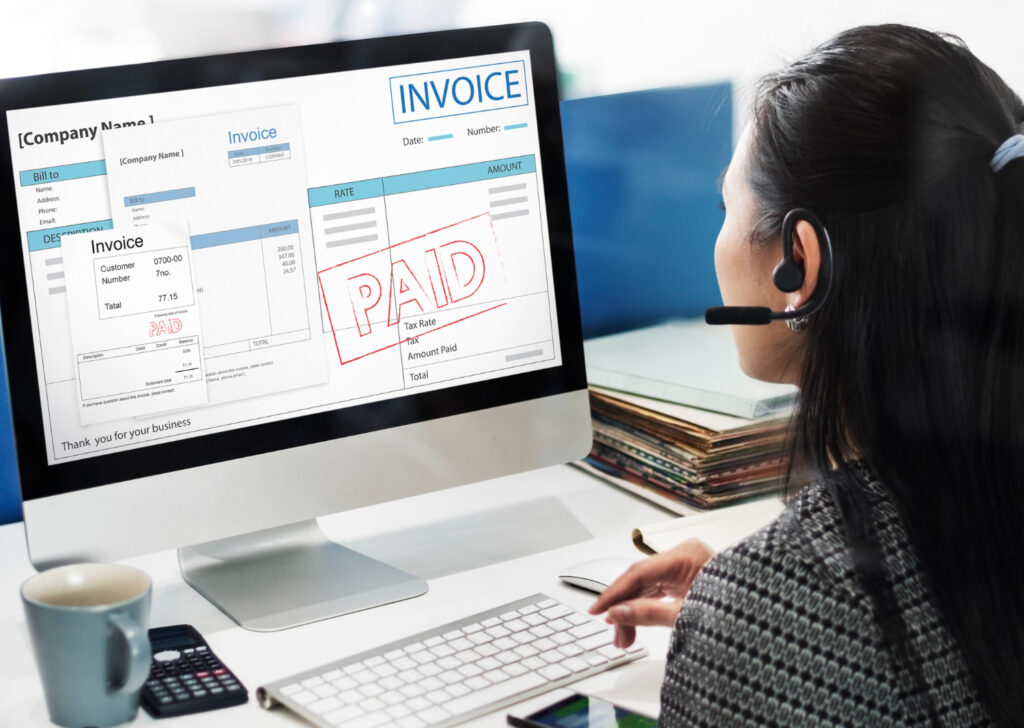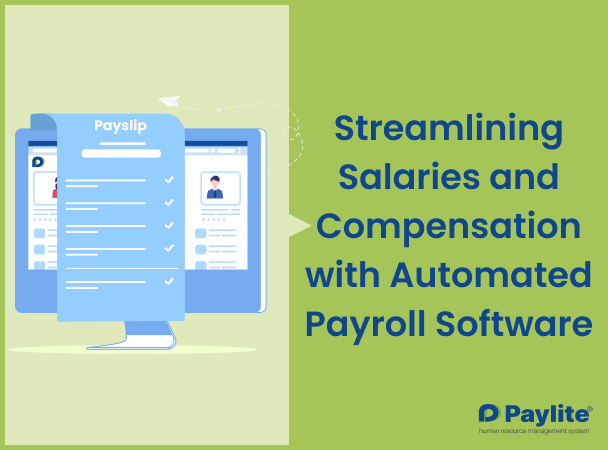Payroll management is one of the most challenging tasks every business, no matter how big or small, must undertake. According to the 2022 survey featured in The Business Journals, over 1,000 business owners found processing payroll and calculating salaries of employees is one of the most time-consuming HR tasks. So, how do you get rid of the stress and complexity of manual payroll processing? The answer lies in smart payroll management using top automated payroll software in the GCC and MENA countries.
Automated Payroll Software in the Middle East: A Game-Changer
Top payroll software, such as Paylite HRMS, is designed to automate the entire payroll process, saving time and effort. By automating payroll tasks, businesses in the GCC can ensure accuracy, streamline operations, and maintain compliance with local labor laws. In this blog, we will explore how payroll automation revolutionizes payroll management and helps organizations stay ahead.
What is Payroll Automation
Payroll automation means increasing use of technology to efficiently streamline and manage payroll-related tasks. By utilizing payroll software in MENA countries, the need for human intervention in payroll processes can be minimized.
In a manual payroll process, the human resources, finance, and accounting teams work together to keep business records updated, ensure timely payment of wages, and promptly file taxes.
Automated payroll systems, on the other hand, can handle tasks such as calculating gross and net salaries, determining payroll deductions, collecting necessary payroll data, issuing employee wages, creating payroll records, and more.
Although payroll software cannot do all the tasks for you, it can certainly reduce human involvement and simplify employee payment processes.

Use Cases: Manual Vs Automated Payroll Processing
Manual Payroll Processing
Consider the scenario where a small business, with a single office and just 10 employees, manages payroll manually. Every month, the owner carefully reviews the working hours and enters salary information of employees into a spreadsheet. The spreadsheet calculates the deductions. The owner then sets up direct deposits for each employee and manually types up their pay cheques. While this method works for a small operation, it is time-consuming and prone to errors, making it less efficient as the business grows.
Automated Payroll Software
Meanwhile, a global enterprise with offices across 5 countries and 1200 employees utilizes an automated payroll system tailored to its complex needs. The finance department leverages built-in time-tracking software to accurately calculate wages and deductions. The system generates location-specific pay slips and ensures timely payment to employees. Additionally, it streamlines operations and reduces the risk of WPS, PASI, GOSI, and other compliance issues in the GCC. This automated approach is especially valuable in the market, where efficiency and accuracy in payroll processing are crucial for large-scale businesses.
What are the Benefits of Payroll Automation – How does Paylite Help
Streamlines Tedious Manual Tasks
Switching to Paylite, the most popular HRMS in GCC countries is an easy decision when you consider how it takes over repetitive, manual tasks like tracking employee hours and overtime. This shift not only saves time but also enhances the efficiency and productivity of your HR team, leading to greater profitability.
Minimizes Payroll Errors
Automated payroll systems, like Paylite, centralize all payroll data, reducing the risk of mistakes. With self-service functions, employees can even update their personal information themselves, further minimizing errors. Payroll errors don’t just cause operational disruptions; they also pose serious compliance risks. Incorrect payroll calculations can lead to inaccurate tax withholdings, which could result in costly fines from regulatory authorities.
Strengthens Compliance
The HR management system helps ensure your payroll processes are accurate and compliant, saving your business from potential penalties. Paylite not just ensures full compliance with regional and global regulations but also simplifies tax, social security, and pension management.
Saves Time and Money
Automation speeds up payroll calculations, allowing your HR and payroll managers to focus on strategic tasks like talent acquisition, employee engagement, and fostering a positive work environment. By enhancing process efficiency, Paylite reduces operational costs and frees up valuable time that can be redirected toward core business activities.
Enhances Data Security
Employee payroll data is highly sensitive and must be protected from unauthorized access. Automated payroll systems like Paylite use encryption to safeguard confidential information, eliminating the risks associated with printed spreadsheets and physical documents. The system also securely stores tax-relevant details, ensuring your organization is audit-ready at any time.
Simplifies Payroll Management
Payroll management is inherently complex, with numerous tasks that need to be handled meticulously. Paylite simplifies this process by automating key functions such as tax calculations, data export, and report generation on workforce costs and productivity. This not only makes payroll management more transparent and accessible but also significantly reduces the workload for your HR team.
Supports Business Growth
As businesses in the GCC region expand, their payroll needs become more complex. Manual processes can’t keep up with growing headcounts and increasing payroll data. Automating payroll with a robust HR management software in the MENA region is essential for scaling your operations efficiently and ensuring your payroll system can support sustained business growth.
Future-Proofs Your Payroll Operations
In today’s digital era, embracing payroll automation is vital for staying ahead. An automated payroll system is more resilient and efficient, positioning your business to meet the ever-increasing demands of the modern workplace. Paylite is a key component of digital transformation, helping your business in the GCC prepare for the future with confidence.

How to Choose the Best Automated Payroll Software in the GCC and MENA
Choosing the right payroll automation system can transform how efficiently your business handles payroll tasks. Payroll management comes with several pain points, such as filing local taxes, tracking employee time and attendance, managing paid time-offs, and handling employee data.
A well-designed payroll system can ease these burdens by automating complex tasks and reducing errors. To start, consider how the system addresses essential functions like tax filing, self-service access for employees, and software integration for accounting.
When evaluating payroll automation systems, it is crucial to ask key questions: Does the system fit the size of your company, and can it scale as you grow? Integration is another key factor – ensure the payroll system can seamlessly connect with your existing HR software for a smooth workflow.
Think about how much time you currently spend on payroll and how an automated system could simplify and speed up this process. Finally, focus on the features that matter most to your business, such as reporting capabilities, paid time-off tracking, or pay adjustments.
A good payroll system should not only meet your current needs but also evolve with your company’s growth.
How can You Automate Payroll Tasks
Transitioning from manual payroll processes to automation is a critical step for companies looking to boost efficiency. This shift requires careful planning, but the benefits far outweigh the initial effort. By automating common payroll tasks, businesses can save time, reduce errors, and enhance accuracy.
Transferring Employee Data from HR System to Payroll
One of the first tasks to automate is the transfer of employee data from HR to payroll. When an employee’s information is updated in the HR system, it should seamlessly flow into the payroll system. If your HR and payroll systems are integrated, this happens automatically. However, if they are separate, an interface can bridge the gap to ensure smooth data sharing, eliminating the need for manual input and reducing the risk of errors.
Tax Filing and Reporting
Next, automatic tax calculation can significantly streamline payroll. Calculating taxes for employees across multiple locations with varying tax laws can be complex and time-consuming. Payroll software simplifies this by automatically calculating taxes for each pay period, ensuring compliance and accuracy while freeing up valuable time for payroll teams.
Payroll Calculation and Comparison
Another helpful feature is the comparison of previous payrolls. Automated systems can flag discrepancies between the current and previous pay runs, such as an hourly employee who hasn’t logged hours. This allows payroll teams to catch and correct potential issues without manually reviewing all data, saving time and minimizing mistakes.
Automatic Processing of Benefits and Expenses
In addition, fixed deductions such as benefit payments can be automated. Payroll software will automatically include the correct deductions for each employee, ensuring that all benefits, deposits, and expenses are accounted for without manual calculation.
Automatic Time Tracking
Integration of timesheet data ensures that time worked, vacation, and overtime details flow from timesheet software to payroll. This allows for seamless tracking and accurate payment without manual entry, keeping payroll operations running smoothly and efficiently.

